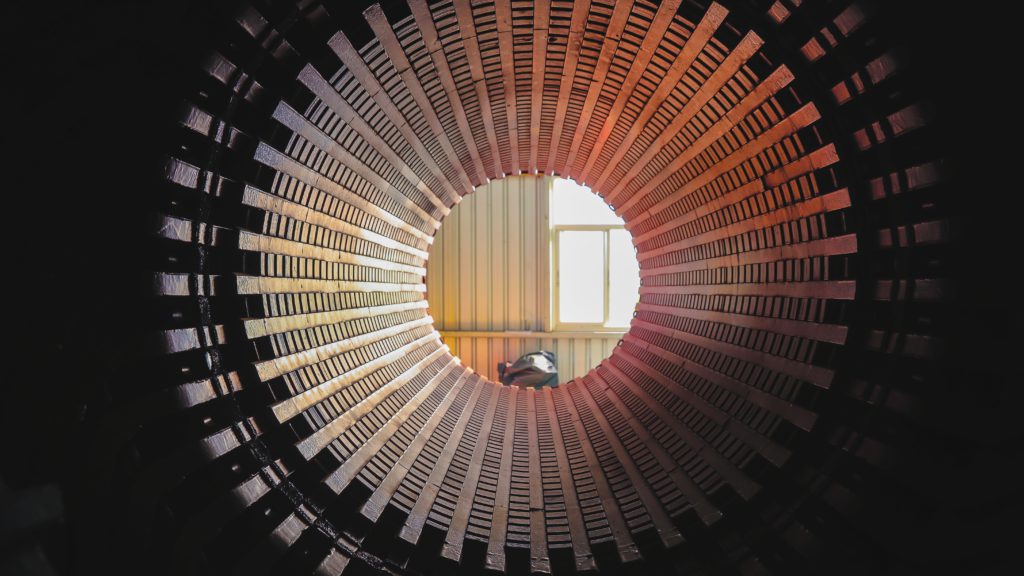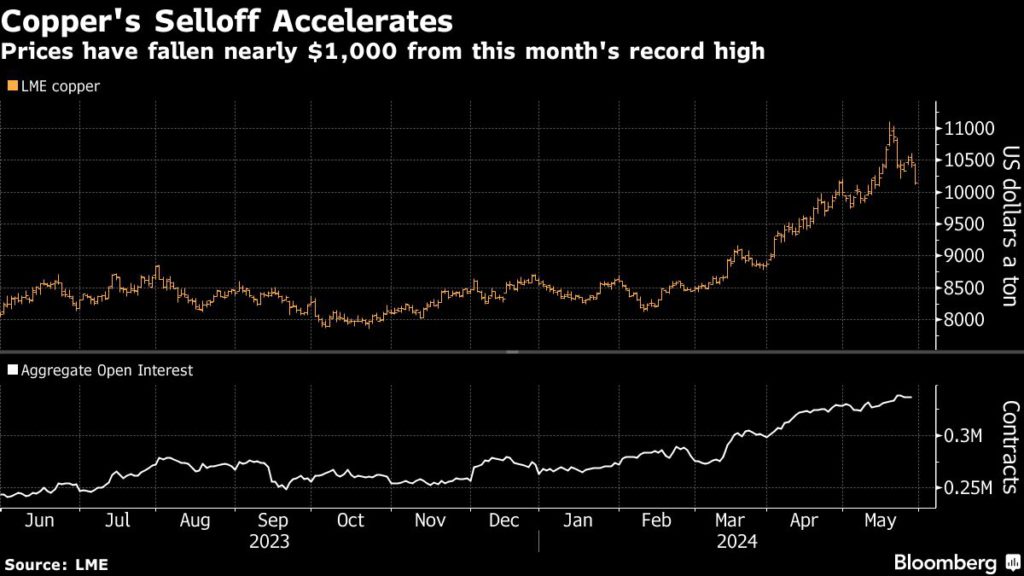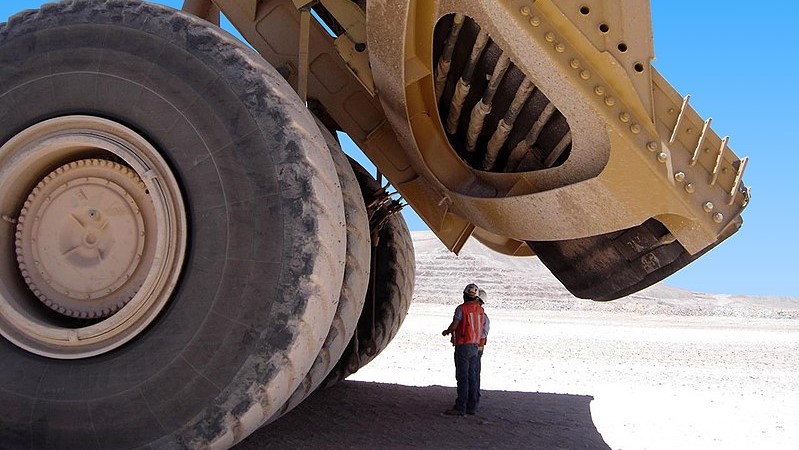Base metals stage rapid retreat as profit taking accelerates

Copper extended its retreat from a record, and aluminum dropped from a two-year high, as investors looked to cash in after a blistering rally across industrial metals markets.
The red metal fell for the sixth time in seven sessions, losing as much as 3.8% during a broad sell-off on the London Metal Exchange. Prices have rallied sharply this year as mine supply tightened and macro-focused investors turned more positive on the global economy. Still, there have been consistent warnings the rally has run ahead of fundamentals.
“At these elevated price levels, there’s a clear disconnect between investors’ expectations and the reality in physical markets,” said Amelia Xiao Fu, head of commodities strategy at BOCI Global Commodities UK. “We’ll continue to see this power play between macro players and the physical market.”
The newfound interest in copper has been underpinned by tentative improvements in the manufacturing and industrial sectors, a dramatic squeeze on global mine supply and rising optimism surrounding usage in renewables and artificial intelligence.
Investors and traders with short positions came under increasing strain as copper soared, but the balance of power is now shifting as prices fall.

Consumers also cut back on purchases as contracts surged to a record above $11,100 a ton, but they’re likely to start stepping back into the market if the metal falls back toward $9,500, Fu said.
Still, the downside might be limited, as “the metal’s bull run is not done yet,” said Xu Wanqiu, an analyst with Cofco Futures Co. Investors are also looking to buy as prices dip, and Chinese smelters are under increasing pressure to cut output due to a shortage of mined ores, Xu said.
Copper fell 2.9% to $10,159 a ton in London as of 3:30 p.m., leading all metals lower on the LME.
Aluminum fell 2.7% to $2,692.50 a ton after earlier reaching $2,799 — the highest since June 2022. That followed a move by China to tighten capacity controls across an array of metals to meet emission goals.
The country will strictly limit new capacity for copper smelters and alumina output, and take a reasonable approach in allocating fresh capacity for silicon, lithium and magnesium, the government said in a work plan for 2024-25.
The government also reaffirmed strict implementation of the “aluminum swap scheme,” or the requirement for any new smelter to be matched by the closing of an existing one.
New capacity for aluminum, alumina, polysilicon and lithium batteries must meet advanced levels of energy efficiency, it said.
{{ commodity.name }}
{{ post.title }}
{{ post.date }}

Comments